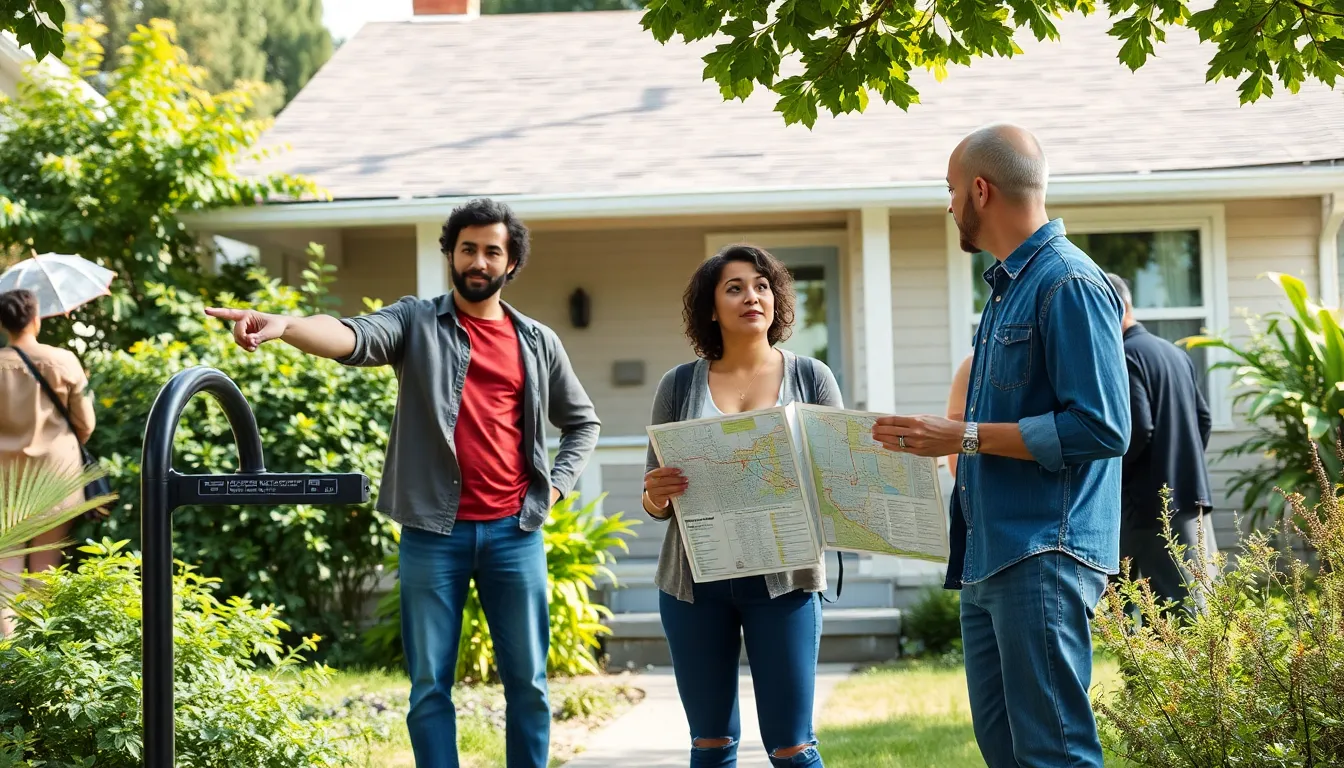In a world where avocado toast can cost as much as a small car, finding affordable living solutions feels like hunting for unicorns. Yet, with a little creativity and resourcefulness, it’s possible to live well without breaking the bank. Imagine enjoying life’s simple pleasures—like a weekend brunch—without needing a second mortgage!
Affordable living isn’t just about slashing expenses; it’s about embracing a lifestyle that prioritizes experiences over excess. From cozy neighborhoods with character to smart budgeting hacks, the journey to financial freedom can be both fun and fulfilling. Buckle up as we explore practical tips and tricks that make living well on a budget not just a dream, but a delightful reality.
Table of Contents
ToggleUnderstanding Affordable Living
Affordable living encompasses the concept of maintaining a good quality of life while managing expenses effectively. Individuals can achieve this balance through conscious financial decisions and resourceful living.
Definition of Affordable Living
Affordable living refers to the ability to meet essential needs, such as housing, food, and healthcare, without incurring excessive debt. This financial state allows individuals to save and invest, contributing to long-term stability. Maintaining a budget aids in distinguishing between needs and wants, leading to clearer financial priorities. Many individuals strive for a lifestyle that prioritizes basic necessities and reduces unnecessary expenditures.
Importance of Affordable Living
Affordable living plays a crucial role in enhancing overall well-being. Individuals who manage their finances effectively often experience reduced stress and can pursue personal goals. Access to affordable housing and services promotes community stability and encourages social connections. Savings from living economically can provide opportunities for travel or education, further enriching life experiences. Ultimately, affordable living supports sustainability in personal finances and encourages thoughtful consumption.
Key Components of Affordable Living

Affordable living involves essential elements that support a balanced and financially stable lifestyle. Understanding these components helps individuals navigate their financial landscape more effectively.
Housing Options
Housing options play a crucial role in affordable living. Renting, purchasing, or sharing accommodations can significantly impact monthly expenses. People often explore suburbs or rural areas for lower housing costs. Affordable housing programs provide assistance for those in need. Many benefit from co-housing arrangements, where communal living reduces expenses. Utilizing online platforms allows for finding affordable listings that align with budgets. These strategies enhance financial flexibility and support stability.
Transportation Costs
Transportation costs heavily influence overall living expenses. Public transit systems offer a cost-effective way to travel and avoid high car ownership costs. Biking or walking reduces reliance on vehicles and promotes healthier lifestyles. Carpooling programs provide shared transportation, cutting down fuel expenses. Many individuals find value in using rideshare services for occasional trips. Evaluating local transportation options allows budgeting for essential travel without incurring excess debt. Prioritizing these choices contributes to financial savings and supports an affordable living strategy.
Strategies for Achieving Affordable Living
Achieving affordable living involves careful planning and resourcefulness. Individuals can adopt specific strategies to maintain their budget and enjoy a fulfilling lifestyle.
Budgeting Tips
Start by tracking monthly expenses to identify spending patterns. Allocate funds for essentials like housing, food, and healthcare. Review this budget regularly to adjust for any changes. Set clear financial goals to prioritize needs over wants. Use budgeting apps or spreadsheets to streamline this process. Explore the 50/30/20 rule: dedicate 50% of income to needs, 30% to wants, and 20% to savings. People can benefit from meal planning, which reduces food waste and cuts grocery costs. Creating a habit of saving small amounts regularly can lead to significant financial improvements over time.
Cost-Saving Resources
Utilize community resources to enhance affordable living. Libraries offer free access to books, online courses, and events. Local food banks provide nutritional support, making it easier to save on groceries. Compare prices online for groceries, clothing, and household items to find the best deals. Many communities have swap groups where individuals can trade items, reducing costs and promoting sustainability. Check for local discount programs or apps that offer cash back on purchases. Participate in community events that are free or low-cost, allowing individuals to enjoy experiences without heavy financial burdens.
Benefits of Affordable Living
Affordable living enhances everyday experiences and fosters a sustainable lifestyle. It provides numerous benefits that contribute to overall well-being and financial stability.
Improved Quality of Life
Affordable living improves quality of life by reducing financial stress. Living within budget allows individuals to focus on essential needs like housing, food, and healthcare. This focus contributes to mental and emotional well-being. Engaging in low-cost activities promotes community connections and shared experiences. Individuals discover local events, outdoor activities, and free resources that enhance social interactions. By prioritizing what truly matters, people experience greater satisfaction and fulfillment in their daily lives.
Financial Freedom
Financial freedom becomes attainable through affordable living. Managing expenses effectively lets individuals allocate funds for savings and investments. Creating a budget clarifies financial priorities, emphasizing needs over wants. Setting clear financial goals motivates individuals to stay disciplined in spending habits. Engaging with community resources provides additional support, reducing costs further. With lower living expenses, individuals can enjoy flexibility in making life choices, such as travel or education. Affordable living establishes a foundation for long-term financial well-being.
Challenges of Affordable Living
Affordable living faces several challenges. A major issue involves rising living costs that strain budgets.
Rising Living Costs
Rising living costs present a significant hurdle for individuals seeking affordable living. In urban areas, rent prices often exceed $2,000 monthly for a one-bedroom apartment. The costs of essential goods, like food and utilities, continue to escalate as well. Increased demand and limited housing supply contribute to this inflation. Families struggle to balance their budgets while accommodating these expenses. Individuals may find themselves allocating more than 30% of their income towards housing, leaving less for necessities. Adapting to these financial pressures requires innovative solutions to maintain a comfortable lifestyle.
Limited Availability of Resources
Limited availability of resources further complicates the quest for affordable living. Community resources, such as affordable housing and quality healthcare, often fall short in many regions. Access to affordable grocery stores becomes scarce in food deserts. Public transportation options may lack reliability or coverage, inhibiting job opportunities. Residents face challenges in accessing educational resources like libraries and after-school programs. The demand for support services often exceeds their availability, creating competition among individuals for limited offerings. Overcoming these obstacles necessitates community collaboration and creative problem-solving.
Affordable living isn’t just a dream; it’s a realistic goal that many can achieve with the right mindset and strategies. By prioritizing needs over wants and embracing creativity, individuals can navigate the challenges of rising costs. This approach not only enhances financial stability but also enriches everyday experiences.
Focusing on community resources and making informed choices about housing and transportation can significantly lower expenses. As people adopt these practices, they’ll find that a fulfilling lifestyle is well within reach. Ultimately, affordable living fosters not just financial freedom but a deeper appreciation for life’s simple pleasures.





